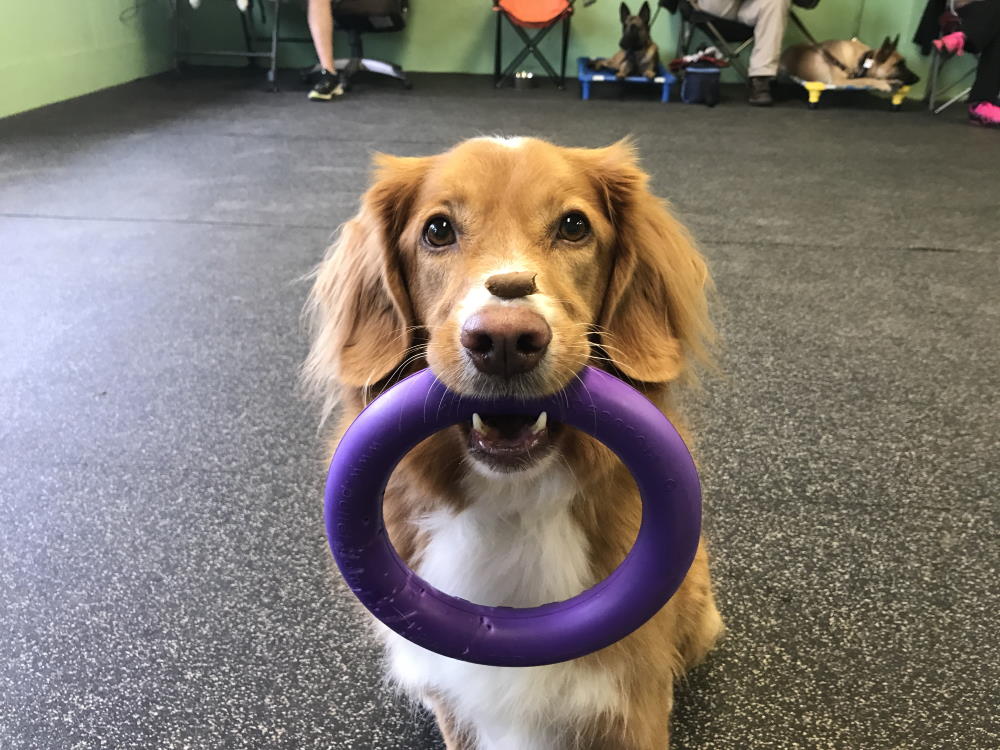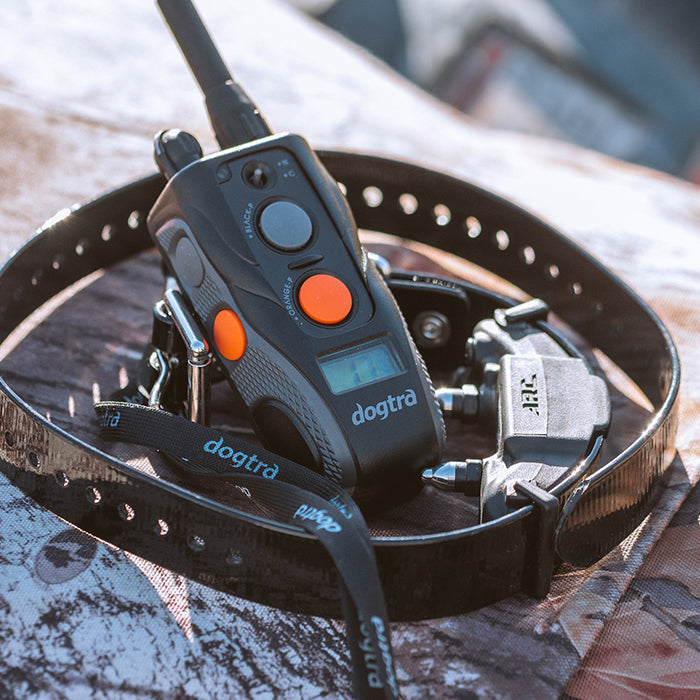TEACHING YOUR DOG TO STAY: YOU’LL BE HAPPY YOU PUT IN THE EFFORT!

The dictionary description of stay begins with the verb; to remain in the same place. To remain in the same place or stay is one of the critical things a dog should understand in order to be a well-mannered member of society. But, it is one skill that many dog owners fail to achieve.
Let’s take a look at why so many pet owners have a difficult time teaching their dog to stay and then we’ll discuss how to fix it.
Having a clear understanding of what stay should actually mean is probably one of the biggest reasons people fail to teach it properly. Often times, dog owners only have a vague concept of what they expect their dog to do and therefore their dog only gains a vague idea of what to do! Telling Fido to stay because you don’t want him to follow you out the door and then later using the word stay to imply that the dog should sit still while you attempt to clip on a leash are two very different concepts.
Because dogs are not capable of grasping these varying nuances, it’s critical that we associate clear expectations of the behavior we want in response to the words or cues we use.
Inconsistent expectations lead to inconsistent results. So, let’s define “stay” as remaining in a specified position. If we tell the dog to “Sit – Stay”, then we’ll hold the dog accountable to remaining in a sitting position. If we tell the dog to “Down – Stay”, then we’ll hold the dog accountable to remaining in a laying down position.
By having this clarity, we are teaching the dog that “stay” means moving is not an option – Which is why you shouldn’t use that word when you leave the house and simply don’t want the dog to follow you out the door. You don’t really expect Fido to remain standing at the threshold for hours on end!
Once you are clear on what the word “stay” will mean, it’s time to get consistent in expecting it. There is no way that a dog will become reliable with his training if his owner doesn’t develop the wherewithal to insist the dog follow through.
Keep the old adage “say what you mean and mean what you say” in mind when you’re speaking to your dog. If you aren’t going to follow through, then don’t bother to say anything.
It isn’t difficult to teach a dog to stay IF you stop him AS SOON AS he begins to break position. The easiest way to interrupt a dog that is attempting to move is through some means of mechanical control.
When I teach a stay behavior I start with a leash and add in the e-collar. The e-collar helps me build a high level of reliability around distractions and when the dog is off leash.
The more precise your timing, the faster the dog will learn. Interrupt movement as it happens rather than seconds or minutes later. This means you have to pay attention to your dog. If the timing of your interrupter (leash or e-collar) is delayed by more than 2-3 seconds, just start over and vow to pay better attention. There is no point in interrupting a mistake that happened 30 seconds ago. By then, your dog has wandered off and long forgotten what he was supposed to be doing!
The e-collar gives an advantage for impeccable timing even when we are at a distance from the dog. It is important that I point out you have to build up to training at a distance by doing the collar conditioning and working in closer proximity first!
When using the e-collar to interrupt mistakes of breaking position, be aware that it doesn’t typically take an increase of e-collar pressure IF you tap the button just AS the dog is about to break. The reason people struggle gaining control around higher levels of distraction and often feel they have to turn the collar up is because their timing is too delayed.
Don’t wait until the dog has broken and is already in pursuit of the squirrel. By then, it is too late to maintain the stay. The dog’s adrenaline is too high and you’ll most likely have to turn the collar up just to get Fido to even come back to you.
The best timing for interrupting a change of behavior is when the dog is thinking about it.
By interrupting the thought of breaking, rather than the action, you improve your dog’s ability to remain focused on staying. This requires learning to read canine body language. For instance, if I’m teaching a dog to “Sit-Stay” I will use my leash or an e-collar tap to interrupt when I see the slightest indication my dog is shifting behavior. These indications are typically a head, ear, or eye movement. They happen before the butt is actually coming up off of the floor.
In the proofing phase of the dog’s training, I anticipate mistakes are about to occur so I use very proactive timing. I want to interrupt mistakes before they actually happen. This strengthens the dog’s understanding of remaining in the correct position.
After a few repetitions I can then test the dog to see if he holds steady without the interrupting tap or leash tug and if so, I reward generously so he learns that excellent things happen when he holds position as requested.
IMO, training this way allows me to use far less e-collar pressure and is fairer to the dog. I can teach FIDO what to do rather than setting him up for mistakes. Because I practice this way, it is infrequent that I need to use higher levels of e-collar pressure to punish unwanted behavior.
The third piece of training a dog to stay is teaching the dog a cue that lets him know he has finished the behavior. A word such as Okay, Free, Break or similar, is essential in order to communicate to the dog that he’s been successful and is now free to go. Think of this cue similar to the class bell that rings to let the students know they can leave the classroom. Without that signal, leaving is not an option and you’ll be returned to class. :-)
The 3 key elements in teaching stay are:
- Be clear about what position you want your dog to stay in.
- Interrupt your dog AS SOON AS he begins to deviate from that position.
- Let your dog know when he is free to go by teaching a release cue.
To give it all a higher level of style and maintain a fantastic working attitude use rewards generously. Treats, toys, play, or issuing the release and permission to go chase that squirrel will help you create a well-trained, eager to listen, companion.
There is no way I would get all these great dog photos without a solid Stay command!
Happy Training,
Robin




